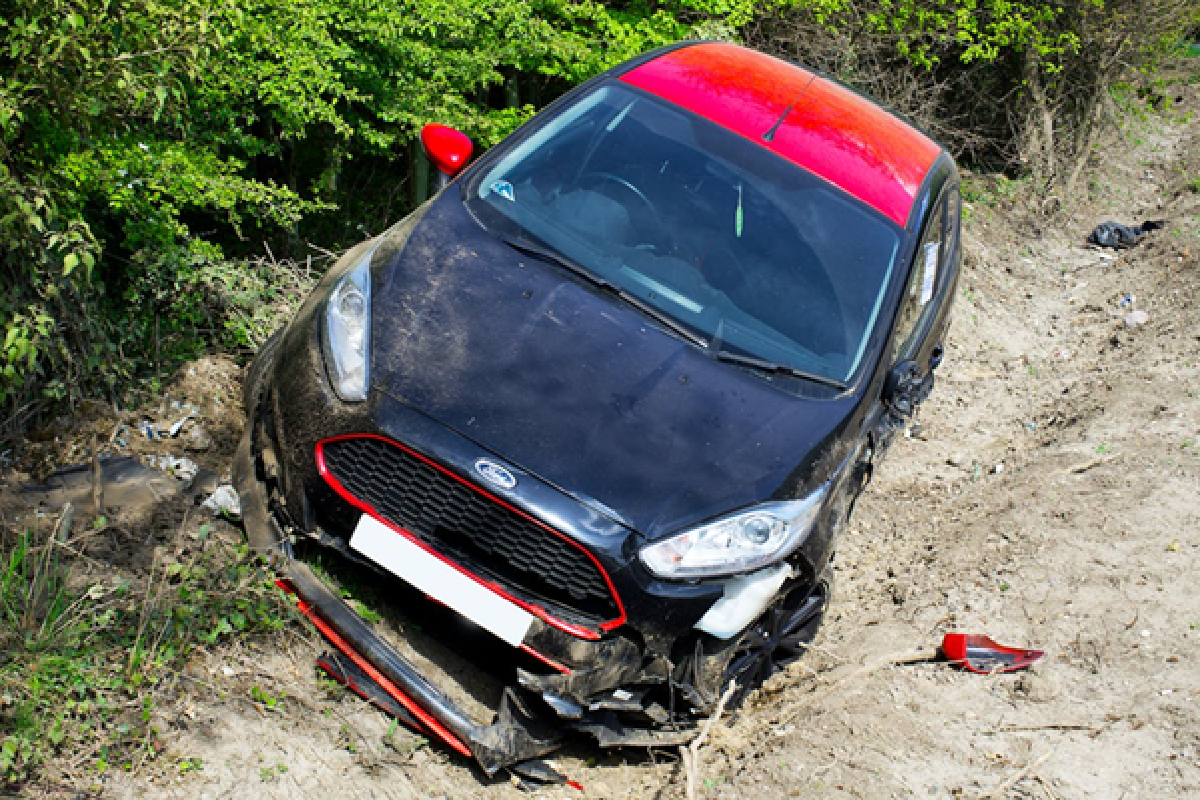Contents of this Post
ToggleFew things can upend life faster than a sudden car crash on the streets of Carrollton. Medical bills, missed work, and insurance adjusters calling at all hours quickly pile stress onto physical pain. Understanding why collisions happen—and exactly how to show another driver caused yours—is the first step toward recovering both financially and emotionally. Below is a Carrollton-focused deep dive into the leading crash factors and the practical evidence that can tip the scales of liability in your favor. If you’re navigating this process, speaking with a personal injury lawyer Carrollton can provide critical guidance from day one.
Why Carrollton’s Road Network Creates Unique Risks
Carrollton sits at the crossroads of three of North Texas’s busiest corridors—I-35E, the Sam Rayburn Tollway (SH 121), and the President George Bush Turnpike (SH 190). Add in fast-growing suburban arterials like Josey Lane, Hebron Parkway, Old Denton Road, and Belt Line Road, and you have a patchwork of high-speed freeways feeding directly into dense commercial zones. The constant mix of long-haul commuters, delivery trucks, and local shoppers means any single lapse in attention can create a multi-vehicle chain reaction in seconds.
Texas also operates under a 51 percent “bar” rule of proportionate responsibility. If a crash victim is more than 50 percent at fault, they recover nothing. That makes solid, early evidence collection in Carrollton collisions absolutely crucial—a point any experienced Carrollton car wreck attorney will emphasize.
The Seven Most Common Causes of Carrollton Car Crashes
1. Distracted Driving at Busy Intersections
Texting through the Josey & Belt Line light or checking GPS while merging onto I-35E steals a driver’s eyes from the road for precious seconds. Even glancing down for five seconds at 45 mph covers the length of a football field—ample distance to blow a red light or rear-end stalled traffic.
Tell-tale evidence: phone-use timestamps, dash-cam footage showing head-down posture, and intersection cameras from the city’s traffic-management center.
2. Speeding on High-Speed Transition Ramps
The sweeping flyovers linking SH 121 to I-35E encourage aggressive acceleration. Slick concrete in summer heat and sudden north-Texas thunderstorms reduce traction, turning routine lane changes into spinouts.
Tell-tale evidence: crash-data “black-box” downloads (event-data recorders), skid-mark measurements, and TxDOT crash-scene diagrams.
3. Impaired Driving After Nightlife Districts
Carrollton’s revitalized downtown and nearby Addison restaurant row mean more late-night traffic. Even one or two drinks can delay reaction times long enough to miss brake lights on Hebron Parkway.
Tell-tale evidence: police field-sobriety reports, toxicology results, bar receipts, and eyewitness statements about erratic lane-keeping.
4. Failure to Yield on Unprotected Left Turns
Unprotected left-turn pockets—particularly on Trinity Mills Road near large retail plazas—require crossing multiple through lanes. Misjudging an oncoming vehicle’s speed is a prime recipe for devastating T-bone collisions.
Tell-tale evidence: intersection signal-phase logs, location of impact damage on both cars, and testimony from drivers waiting in adjacent turn lanes.
5. Tailgating in Stop-and-Go Construction Zones
Ongoing expansions of SH 190 often narrow lanes and eliminate shoulders. Drivers who crowd the bumper ahead have no escape when traffic suddenly grinds to a halt.
Tell-tale evidence: damage patterns showing rear-end impact, sequential dash-cam clips, and work-zone signage photos establishing reduced speed limits.
6. Drowsy Driving on Long Commutes
Many Carrollton residents work in downtown Dallas or Plano tech hubs, logging 45-minute drives each way. Micro Naps on the I-35E express lanes routinely cause drifts across lane markings or full lane departures.
Tell-tale evidence: erratic steering inputs captured on event-data recorders, witness accounts of weaving, and coffee receipts or time logs proving extended hours behind the wheel.
7. Mechanical Failures and Poor Maintenance
Texas’s hot summers accelerate tire blow-outs and brake-fade events—especially on older vehicles tackling SH 121’s 70 mph limits. While the part may fail spontaneously, owners who skip inspections can still be liable.
Tell-tale evidence: service-center records, expert mechanic testimony, and component teardown photos.
Proving Fault: A Roadmap for Carrollton Victims
1. Secure the Police Crash Report—Immediately
Carrollton Police and the Texas Highway Patrol file crash reports via the CR-3 form. Order it through TxDOT’s Crash Records Information System (C.R.I.S.) within days. The officer’s preliminary fault assessment, diagram, and witness list provide the backbone of any claim.
Quick tip: If the report misstates key facts (e.g., weather or signage), file a supplemental affidavit while memories are fresh.
2. Collect Physical and Digital Scene Evidence
- Photos & Video: Use your phone to document skid marks, vehicle positions, debris fields, nearby traffic signs, and weather conditions. Angle shots to capture distance and reference landmarks like Kia of Carrollton or the Trinity Mills DART station for orientation.
- Vehicle Telematics: Many cars store seconds of pre-crash speed, brake-pedal pressure, and steering angle. Have your lawyer send a preservation letter to the at-fault driver’s insurer so their vehicle isn’t repaired or scrapped before a download.
3. Locate Independent Eyewitnesses
Traffic on Old Denton Road at rush hour guarantees several uninvolved drivers saw the collision. Politely ask for contact info at the scene; third-party statements often carry more weight than those of involved motorists.
4. Request Intersection or Commercial Surveillance Footage
Carrollton’s traffic-operations center records many major intersections. Additionally, businesses along Belt Line Road—gas stations, big-box stores, fast-casual restaurants—frequently archive outdoor cameras for 72 hours. Time is critical: send spoliation letters within days.
5. Retain the Right Experts
- Accident-Reconstruction Engineers analyze crush damage, roadway grades, and black-box data to render 3-D animations.
- Human-Factors Specialists explain how distractions or impaired perception lead to delayed braking.
- Forensic Mechanics testify on worn brake pads or defective steering racks.
Jurors respect concrete calculations: stopping-distance formulas, delta-V (change in velocity) values, and coefficient-of-friction measurements far outweigh verbal finger-pointing.
6. Understand Texas Modified Comparative Fault
Texas Civil Practice & Remedies Code § 33.001 bars recovery if a plaintiff is 51 percent or more to blame. Even at lower percentages, damages shrink proportionally. Example: a jury finds a texting driver 70 percent liable and you 30 percent for speeding. Your $100,000 verdict becomes $70,000 after reduction. Solid evidence can keep your share below that critical 51 percent line.
7. Document Injuries and Economic Losses from Day One
- Medical Records & Bills: Chain together ER visits, specialist consults, imaging studies, and prescription receipts.
- Lost-Wages Proof: Employer HR letters, pay stubs, and time-sheet printouts quantify income impact.
- Property Damage Appraisals: Independent body-shop estimates often outclass insurer “quick quotes.”
These documents connect each dollar claimed to the crash itself—essential when insurers dispute causation.
8. Move Fast—but Don’t Settle Fast
Texas’s statute of limitations for personal-injury claims is two years from the collision date. Insurers know victims under financial stress may take lowball offers. Consulting a Carrollton-area personal-injury lawyer early sets a litigation clock, deters evidence destruction, and prevents recorded-statement traps.
Final Thoughts
Carrollton’s blend of high-speed highways, booming commercial corridors, and suburban cut-through routes means accidents often feel inevitable. Yet most crashes trace back to a handful of preventable behaviors: distraction, speed, impairment, fatigue, mechanical neglect, and poor judgment at intersections. Proving another driver caused your wreck requires swift, methodical evidence gathering—police reports, scene photos, witness contacts, and technical expert analysis—all calibrated to Texas’s proportionate-fault rules.
If you or a loved one were hurt on I-35E, SH 121, or a neighborhood street like Scott Mill Road, don’t assume the facts speak for themselves. Each piece of documentation you collect today becomes a brick in the legal foundation of tomorrow’s claim. With a clear understanding of common crash causes and a proactive approach to fault-proof, you can turn a painful moment into a pathway toward full and fair recovery.

